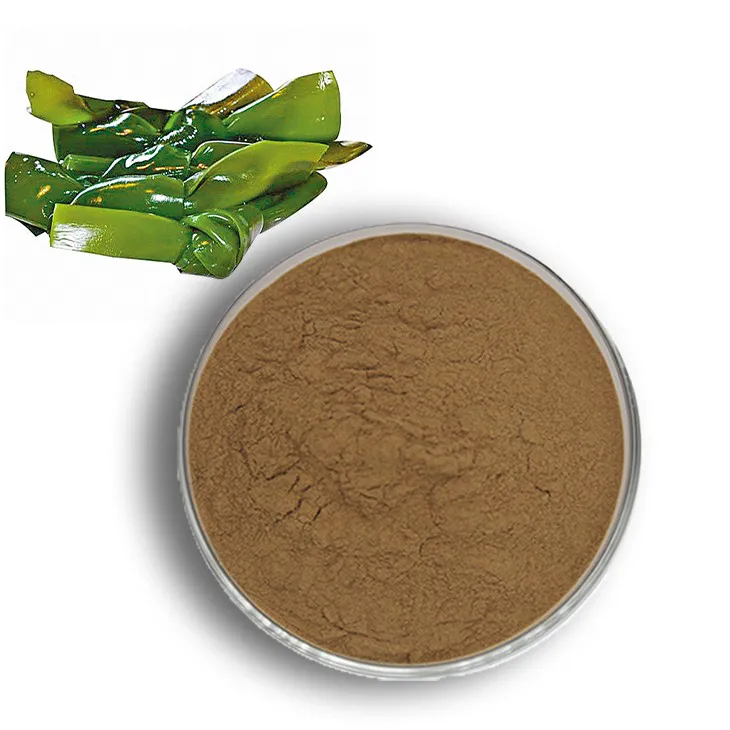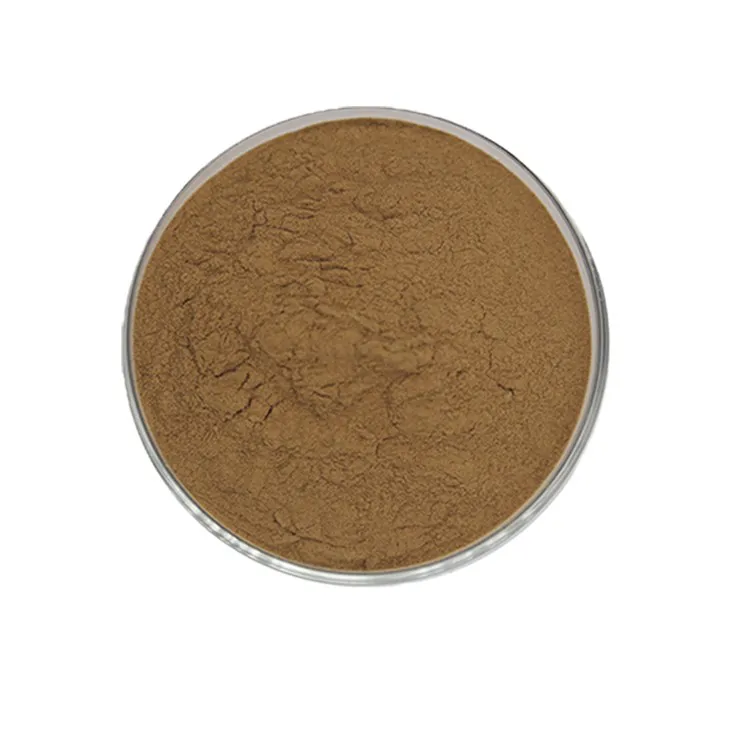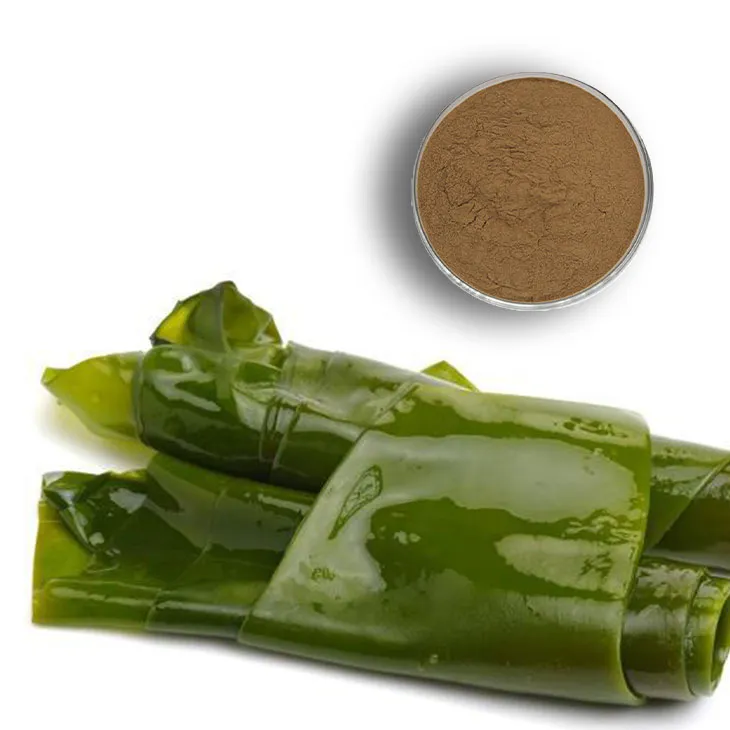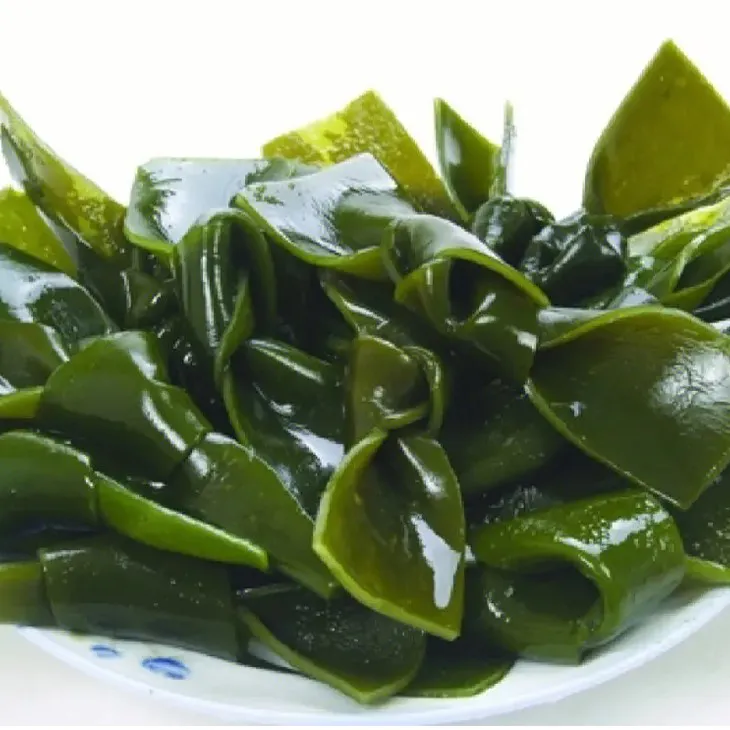- 0086-571-85302990
- sales@greenskybio.com
Extract kelp extract powder by steam distillation.
2024-11-28

1. Introduction
Kelp is a rich source of various valuable substances, such as minerals, vitamins, and bioactive compounds. Extracting Kelp Extract Powder has become an important area of research due to its potential applications in food, pharmaceuticals, and cosmetics industries. Steam distillation is one of the effective methods for this extraction, which offers several advantages over other techniques.

2. Preparation of Kelp before Distillation
2.1 Cleaning
The first step in preparing kelp for steam distillation is thorough cleaning. Kelp is often harvested from the ocean, and it may carry various impurities such as sand, seaweed debris, and small organisms. To clean the kelp, it is rinsed with fresh water multiple times. This process helps to remove the visible dirt and debris on the surface of the kelp.
2.2 Drying
After cleaning, the kelp needs to be dried. Drying kelp can be achieved through natural drying or using drying equipment. Natural drying is a more traditional method, where the kelp is spread out in a well - ventilated area under the sun. However, this method may be affected by weather conditions. Using drying equipment, such as a dehydrator, can provide more consistent drying results. Drying the kelp reduces its moisture content, which is important for the subsequent steam distillation process as excessive moisture can interfere with the separation of valuable substances.
2.3 Grinding
Once the kelp is dried, it is ground into a fine powder. Grinding the kelp increases the surface area available for steam distillation. A grinder or a pulverizer can be used for this purpose. The resulting kelp powder should be of a uniform particle size to ensure even exposure to steam during distillation.
3. The Role of Steam in Separating Valuable Substances from Kelp
3.1 Vaporization of Volatile Compounds
Steam plays a crucial role in the extraction process. When steam is introduced to the kelp powder, it heats up the powder. The heat causes the volatile compounds present in the kelp to vaporize. These volatile compounds include essential oils, certain vitamins, and other bioactive substances. The vaporization occurs because the steam provides the necessary energy to overcome the intermolecular forces holding these compounds in the solid or liquid state within the kelp.
3.2 Carrying the Vaporized Compounds
As the volatile compounds vaporize, the steam also acts as a carrier. The steam - vaporized compound mixture is then carried away from the kelp powder. This is possible because steam has a relatively low density compared to the solid kelp powder. The steam - driven flow transports the valuable substances out of the kelp matrix and towards the collection system for further processing.
4. The Purification Steps following Distillation
4.1 Condensation
After the steam - vaporized compound mixture is carried away from the kelp, the first purification step is condensation. The steam - vaporized compound mixture is passed through a condenser. In the condenser, the steam is cooled down, and it turns back into liquid water. As a result, the vaporized compounds are separated from the steam. The condensed liquid, which now contains the valuable substances from the kelp along with water, is collected for further purification.
4.2 Separation of Water and Extract
The next step is to separate the water from the kelp extract. This can be achieved through various methods such as decantation, centrifugation, or using a separating funnel. Decantation is a simple method where the liquid is allowed to stand still, and the water layer is carefully poured off from the extract layer. Centrifugation uses centrifugal force to separate the two phases more quickly. A separating funnel can also be used to physically separate the water and the kelp extract based on their different densities.
4.3 Drying of the Extract
Once the water is separated from the kelp extract, the extract needs to be dried to obtain the Kelp Extract Powder. Drying can be done using techniques like freeze - drying or low - temperature evaporation. Freeze - drying is a preferred method as it helps to preserve the bioactivity of the compounds in the extract. It involves freezing the extract and then removing the water in a vacuum, leaving behind the dry Kelp Extract Powder.
5. Comparison with Other Extraction Techniques
5.1 Solvent Extraction
Solvent extraction is another common method for extracting substances from kelp. In solvent extraction, a suitable solvent is used to dissolve the valuable compounds from the kelp. However, compared to steam distillation, solvent extraction has some disadvantages. One major drawback is the potential residue of the solvent in the final product. Even after purification, there may be traces of the solvent left, which can be a concern, especially in applications in the food and pharmaceutical industries. Additionally, solvent extraction may require more complex and costly purification steps to remove the solvent completely.
5.2 Pressurized Liquid Extraction
Pressurized liquid extraction involves using high - pressure liquid to extract substances from kelp. While this method can be efficient in extracting certain compounds, it also has its limitations. The equipment for pressurized liquid extraction is often more complex and expensive compared to that for steam distillation. Moreover, the high - pressure conditions may cause some degradation of the bioactive compounds in the kelp. Steam distillation, on the other hand, operates at relatively lower temperatures and pressures, which helps to preserve the integrity of the valuable substances in the kelp.
5.3 Microwave - Assisted Extraction
Microwave - assisted extraction uses microwave energy to heat the kelp and facilitate the extraction of substances. Although this method can be relatively fast, it may not be as effective in extracting all types of valuable compounds from kelp as steam distillation. Microwave - assisted extraction may also cause non - uniform heating, which can lead to local overheating and potential degradation of some compounds. In contrast, steam distillation provides a more uniform heating environment, ensuring a more comprehensive extraction of the valuable substances from the kelp.6. Advantages of Steam Distillation in Kelp Powder Extraction
6.1 Product Quality
Steam distillation results in a high - quality kelp extract powder. Since the process operates at relatively low temperatures and does not involve the use of solvents, the bioactive compounds in the kelp are well - preserved. The final product has a relatively pure composition, free from solvent residues and with minimal degradation of the valuable substances. This makes the kelp extract powder obtained by steam distillation suitable for a wide range of applications, especially in the food and pharmaceutical industries where product quality and safety are of utmost importance.
6.2 Efficiency
Steam distillation is an efficient method for extracting kelp extract powder. The process can be scaled up relatively easily for large - scale production. The use of steam as a carrier and the simple principle of vaporization and condensation make the extraction process relatively straightforward. Additionally, the purification steps following distillation are also relatively easy to perform, which further contributes to the overall efficiency of the extraction process.
6.3 Environmental - Friendliness
Compared to some other extraction techniques, steam distillation is more environmentally friendly. Since it does not use solvents, there is no risk of solvent leakage or disposal problems. The only by - product of steam distillation is water, which can be easily recycled or disposed of without causing environmental pollution. This makes steam distillation a more sustainable option for extracting kelp extract powder.7. Conclusion
In conclusion, steam distillation is a valuable method for extracting kelp extract powder. The proper preparation of kelp before distillation, the important role of steam in separating valuable substances, and the necessary purification steps following distillation all contribute to the successful extraction of high - quality kelp extract powder. When compared to other extraction techniques, steam distillation shows clear advantages in terms of product quality, efficiency, and environmental - friendliness. With the increasing demand for kelp - based products in various industries, steam distillation has the potential to play an important role in the sustainable extraction of kelp extract powder.
FAQ:
Question 1: What are the initial preparations for kelp before steam distillation?
Before steam distillation, kelp needs to be thoroughly cleaned to remove impurities such as sand and dirt. It should also be dried to an appropriate moisture level. Then, it may be cut or ground into smaller pieces to increase the surface area for better interaction with steam during the distillation process.
Question 2: How does steam separate valuable substances from kelp during distillation?
Steam, when passed through the kelp, heats it up. Different substances in the kelp have different boiling points. As the temperature rises, the volatile components with relatively lower boiling points start to vaporize along with the steam. These vaporized substances are then carried away by the steam, effectively separating them from the non - volatile parts of the kelp.
Question 3: What are the important purification steps after kelp steam distillation?
After distillation, the condensate (mixture of steam and the extracted substances) usually needs to be separated. This can be done through techniques like decantation or filtration to remove any remaining solid particles. Then, further purification might involve processes such as fractional distillation if there are multiple volatile components to separate them more precisely. Additionally, drying may be necessary to obtain a pure kelp extract powder.
Question 4: What are the advantages of steam distillation over solvent extraction for kelp powder extraction?
Steam distillation has several advantages. Firstly, in terms of product quality, it does not introduce potentially harmful solvents into the final product as solvent extraction might. Secondly, it is more environmentally - friendly since it does not require the use and disposal of large amounts of solvents. Regarding efficiency, steam distillation can be a relatively fast process depending on the scale, and it can extract a wide range of volatile and valuable substances effectively.
Question 5: How can the efficiency of steam distillation for kelp powder extraction be improved?
The efficiency can be improved in several ways. Optimizing the temperature and pressure of the steam can enhance the vaporization of valuable substances. Ensuring proper contact between the steam and kelp, for example, by using well - designed distillation equipment with good mixing capabilities. Also, pre - treating the kelp in a way that makes it more amenable to steam distillation, such as proper drying or grinding, can contribute to increased efficiency.
Related literature
- Steam Distillation: Principles and Applications in Natural Product Extraction"
- "Kelp Extracts: Production and Their Potential in Various Industries"
- "Advances in Extraction Techniques for Marine Algae - Based Products"
- ▶ Hesperidin
- ▶ citrus bioflavonoids
- ▶ plant extract
- ▶ lycopene
- ▶ Diosmin
- ▶ Grape seed extract
- ▶ Sea buckthorn Juice Powder
- ▶ Beetroot powder
- ▶ Hops Extract
- ▶ Artichoke Extract
- ▶ Reishi mushroom extract
- ▶ Astaxanthin
- ▶ Green Tea Extract
- ▶ Curcumin Extract
- ▶ Horse Chestnut Extract
- ▶ Other Problems
- ▶ Boswellia Serrata Extract
- ▶ Resveratrol Extract
- ▶ Marigold Extract
- ▶ Grape Leaf Extract
- ▶ blog3
- ▶ blog4
-
Chinese Oyster Peptide Manufacturers.
2024-11-28
-
The best organic Agaricus blazei extract.
2024-11-28
-
The best organic sugarcane extract.
2024-11-28
-
The best organic cocoa extract.
2024-11-28
-
Hawthorn Extract
2024-11-28
-
Black Garlic Extract
2024-11-28
-
White mustard seed extract
2024-11-28
-
Resveratrol extract
2024-11-28
-
Angelica sinensis extract
2024-11-28
-
Mangosteen extract powder
2024-11-28
-
Peppermint Extract Powder
2024-11-28
-
Golden Seal Extract
2024-11-28
-
Avocado Extract Powder
2024-11-28
-
Acai Berry Extract
2024-11-28





















